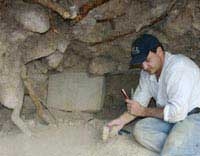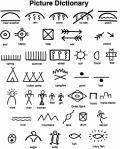Experts were astonished to discover an extraordinarily rare artifact in a dilapidated tomb from the era of Cao Cao’s grandson. What is it?
In July 1956, during construction at a machinery manufacturing plant in Luoyang City (Henan Province, China), workers unexpectedly uncovered an ancient tomb at the site. This was one of 156 key projects under the nation’s first five-year plan. However, upon excavation, local residents found that the ancient tomb had been robbed and was nearly empty.
Upon receiving the report, archaeologists arrived at the scene and discovered that the tomb had been looted, and the identity of its owner could not be confirmed.
In the midst of their confusion, the archaeologists suddenly noticed an inscription on the frame of the iron screen in the tomb that read “8th Year of the Jing Shui Era“.
According to experts, Jing Shui (240 – 249) was a reign title of Cao Pi, the third emperor of the Cao Wei dynasty during the Three Kingdoms period and grandson of Cao Cao. The 8th Year of Jing Shui corresponds to the year 247.
Burials with numerous valuable grave goods were very common during the Han Dynasty. However, during the Cao Wei period, both Cao Cao and his son Cao Pi advocated for simpler burials with fewer valuable offerings.
As a result, compared to the extravagant tombs of the Han Dynasty, the ancient tomb from the Cao Wei period appeared quite shabby and had been desecrated by tomb raiders. Thus, archaeologists believed that this tomb contained no valuable artifacts.

The white jade cup discovered by experts in a Cao Wei tomb.
While the experts debated whether to delve deeper into the ancient tomb, one of them found a special item in a dark corner of the tomb.
This item was covered in mud. After cleaning it, the archaeologists were astonished to discover that what the tomb robbers had left behind was a one-of-a-kind treasure. It was a white jade cup, exquisitely crafted and beautiful. What was even more surprising was that it remained undamaged after nearly 1,800 years in the ancient tomb.
The cup “transcending time” for nearly 1,800 years

Close-up of the white jade cup, a rare masterpiece from the Cao Wei period.
The archaeologists continued their research and discovered that the shape of this white jade cup was not much different from modern cups. The cup stands 11.8 cm tall, with a mouth diameter of 5.2 cm and a base diameter of about 4 cm.
In terms of material, this cup is made from Hetian jade from Xinjiang, a famous type of jade in China. The body of the cup is beautifully polished. Although it lacks intricate decorative patterns, it aligns perfectly with the prevailing philosophy of simplicity and naturalness in society at that time.
Because Cao Wei emphasized simple burial practices, experts found very few cultural artifacts from this dynasty. Thus, the discovery of this thousand-year-old white jade cup is indeed a remarkably rare treasure.
According to experts, this is the only white jade cup from the Cao Wei period that has been excavated in China to date. In recent years, some experts have suggested that the production date of this treasure could even predate the Cao Wei dynasty. Furthermore, the design concept of the white jade cup clearly shows the influence of Western culture, as its shape was not typical of cups from that era.

The exquisitely crafted white jade cup remains intact after nearly 1,800 years.
Due to being made from high-quality white jade, under normal light, the cup appears beige with a faint bluish-white sheen, giving it a mysterious look. Perhaps in the eyes of the tomb robbers, the dusty white jade cup seemed too ordinary compared to other burial items, which is why they left behind this rare treasure.
Upon its announcement, the Cao Wei white jade cup was recognized as a national treasure. Experts highly regard this artifact due to its exquisite craftsmanship and near impossibility of replication.
As a result, right in Luoyang, where many cultural relics are concentrated, this rare white jade cup continues to shine and has become a unique national treasure. The white jade cup from the Cao Wei period is currently on display at the Luoyang Museum.





















































